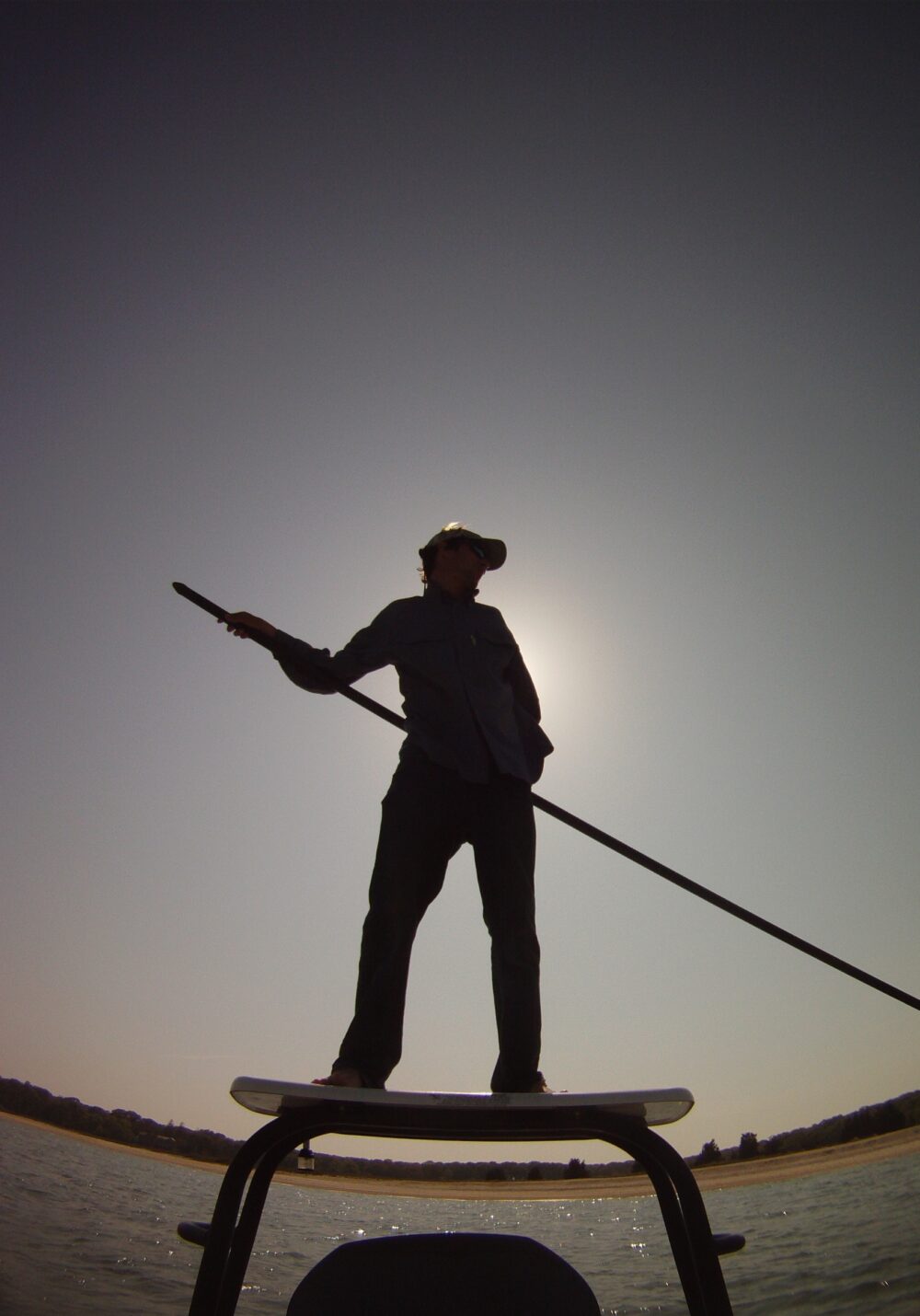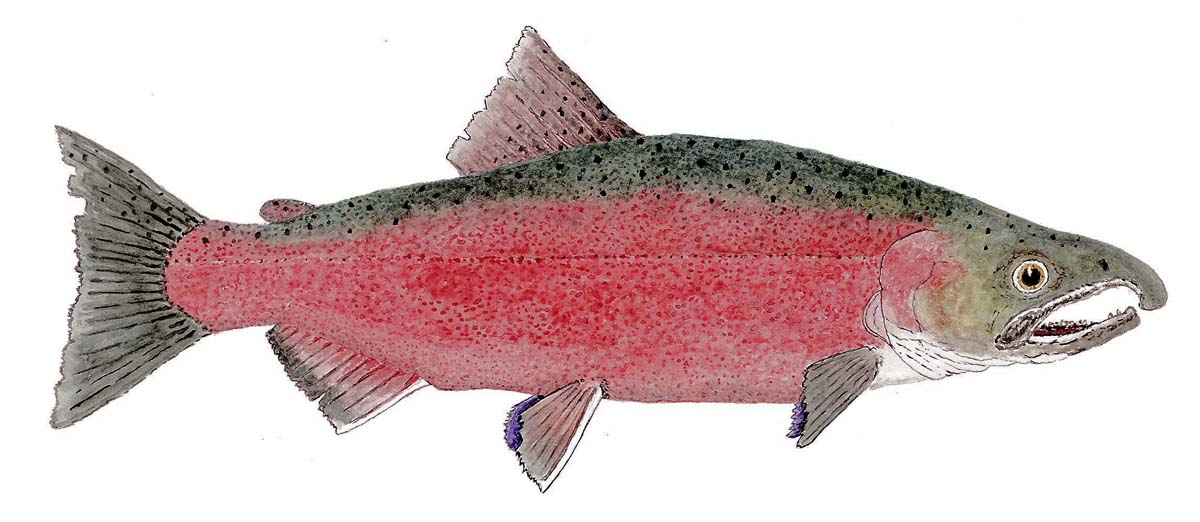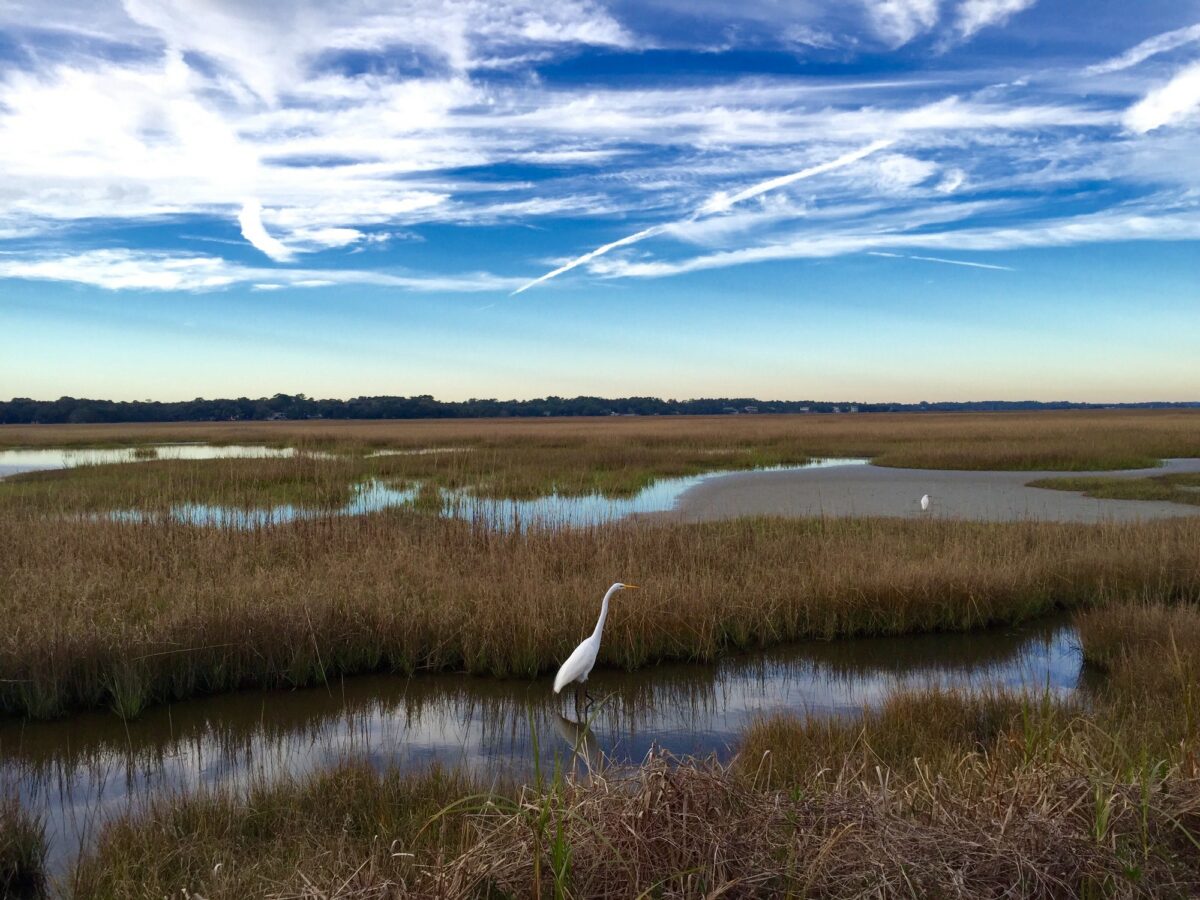
Louisiana Gulf Coast Marsh and Prairies. Photo credit The Nature Conservancy.
Sustainable Fisheries is a non-partisan issue
Healthy coastal wetlands protect and sustain many species of sport fish — Pacific and Atlantic salmon, striped bass, tarpon, snook, steelhead trout, and the forage fish that sustain them also depend on coastal wetlands for places to live, feed, or reproduce.
Wetlands filter our water and protect our coastal communities from floods.
Coastal wetlands are some of the most productive ecosystems on Earth. They are crucial for healthy estuaries, which generate approximately half of commercially harvested seafood in the United States. The quantity and quality of our seafood are directly related to the quality and extent of wetland habitats.

Captain Andrew Derr, poling the striped bass [Morone saxatilis] flats of Long Island, NY.
Each fall, Fisheries Economics of the United States [NOAA] takes a detailed look at the economic performance of commercial and recreational fisheries and other marine-related sectors on a state, regional, and national basis. It also describes how U.S. commercial and recreational fishing affects the economy regarding employment, sales, and value-added impacts. For each region, management highlights summarize stock status, updates on catch share programs, and other selected management issues. Economic performance indicators for catch-share programs are also reported; these are extended to include non-catch-share fisheries in the next edition.
Each report covers ten years and includes statistics on:
- Commercial fisheries (commercial fisheries landings, revenue, price trends).
- Recreational fisheries (recreational fishing effort, participation rates, expenditure information).
- Fishing-related industries (employer and non-employer establishment, payroll, annual receipt information for fishing-related industries).
- Economic impact (employment, sales, value-added impacts).
- Commercial and Recreational Fisheries (Combined) Totals

Male coho salmon spawning colors. Illustration by award winning watercolorist Thom Glace.
Economic impacts from Fisheries Economics of the United States 2019:
- 1.8 million jobs
- $255 billion in sales
- $117 billion in value-added impacts
- 1.2 million commercial jobs
- 553,000 recreational jobs
- $165 billion in retail sales
- $89 billion in recreational sales
- $68 billion commercial value-added
- $50 billion recreational value-added.
In 2018, U.S. commercial and recreational fisheries supported 1.7 million jobs and contributed $238 billion in sales. In addition, coastal communities that support these industries depend on healthy habitats for continued seafood production.
A wetland is an area of land saturated with water and characterized by plants that can tolerate wet soils and low oxygen levels at their roots. Coastal wetlands include all in coastal watersheds—the entire area from which tidal streams drain to the ocean or inland seas.

Bonefish & Tarpon Trust replacing hurricane ravaged mangrove East Grand Bahama – BTT image credit.
Types of coastal wetlands include:
- Salt marshes
- Freshwater marshes
- Seagrass beds
- Mangrove swamps
- Forested swamps
Benefits of Coastal Wetlands
Coastal wetlands support significant benefits—called ecosystem services—that impact our day-to-day lives. For example, they provide clean drinking water, flood protection, recreational opportunities, and more. They also provide essential habitats for commercial and recreational fisheries.
Read more about NOAA and coastal wetlands . . .
Featured image Egret fishing in a marsh – Envato.


